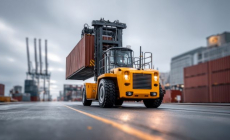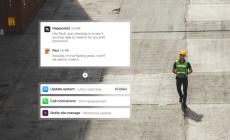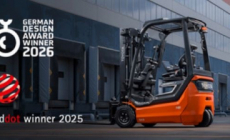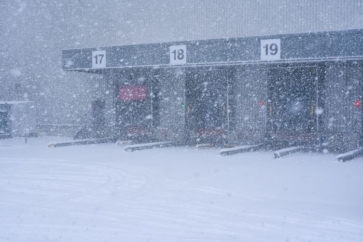-
AI startup Onton raises $7.5M to reinvent the way the world discovers and decides what to buy - November 26, 2025
-
Forklift Market Positions for Recovery as Confidence Expected to Build from 2026 - November 26, 2025
-
PROCare achieves 300% order capacity increase and 99% picking accuracy with Forterro’s ERP solution, Orderwise - November 26, 2025
-
DHL boosts operational efficiency and customer communications with HappyRobot’s AI Agents - November 25, 2025
-
STENA LINE TEAMS UP WITH CAMERA TELEMATICS TO DRIVE SAFETY IMPROVEMENTS AT IRISH SEA PORTS - November 25, 2025
-
Another design award for Toyota’s lithium-ion Traigo_i counterbalanced forklift - November 21, 2025
-
Stuut Technologies Raises $29.5 Million Series A Led by Andreessen Horowitz to Automate Accounts Receivable Work - November 20, 2025
-
INCREASED DIGITAL INVESTMENT REQUIRED TO KEEP PACE WITH 2026 CUSTOMS CHANGES - November 19, 2025
-
FULFILMENT SOLUTIONS FOR SPORTS MERCHANDISE: KEEPING OUR EYE ON THE GAME - November 19, 2025
-
COMPLEX, COSTLY & CONFUSING – THE END OF DE MINIMIS - November 19, 2025
By Thorsten Mauritz – Director of Marketing & Product Management for Rite-Hite in Europe
Winter is upon us, and with a change in weather comes the need to think about your current operations and any gaps in your current thinking in how best to maintain a safe, efficient and productive loading bay into the New Year and beyond.
The change in temperature and the advent of more wet weather and snow also impacts how you think about energy management and ensuring employee safety and wellbeing.
Loading Bays can be hostile environments at any time of the year, but especially in the winter. Each Loading Bay door opening (typically ranging from 8’x8’ to 10’x12’ or larger) is effectively a giant hole in the wall of your facility.
Strung together, these dock openings present an enormous opportunity for bad things to enter your facility during the loading or unloading of goods – like wind, rain, or snow – and good things, like expensive heating and cooling energy, to escape. Ensuring a complete and tight seal at every dock door, can therefore have an immediate positive effect.
Weather-related product damage and contamination, employee comfort and safety, facility hygiene and cleanliness, air quality, maintenance of product quality characteristics and passing inspections are all concerns related to protecting and controlling the environment at the Loading Bay.
Even small, unsealed gaps, like hinge gaps of swing-open trailer doors, for example, can add up to significant costs. Fortunately, highly effective dock sealing products exist that can be designed and installed quickly to make sure docks are sealed up tight and your people, products, processes and profits are protected.
Health and safety
The winter weather can bring additional challenges from both a health and safety perspective. Lighting at the loading bay, for example, can be pivotal in keeping the area safe in the dark mornings and late afternoons during the winter months. Within the trailers themselves, dock lamps are vital in illuminating a trailer or container at the loading bay.
On the exterior of the loading bay, ancillary lights are available that mimic the red/green light system of control boxes. Helping to communicate the ‘restrain status’ to drivers, new lights have been developed to maintain line-of-sight communication regardless of obstructions in front of mounted lightboxes.
Industrial HVLS Fans which keep a facility cool in the summer also have the opposite role in winter to keep a facility warm, improving employee comfort and their mental and physical wellbeing.
One of the biggest dangers, and a danger exacerbated in poor weather, stems from vehicles loading/unloading. Automated wheel locking systems – such as the Global Wheel-Lok – can help prevent serious accidents associated with snow and ice. Unlike traditional wheel chocks which tend to be unreliable, especially in poor weather conditions, Global Wheel-Lok prevents a vehicle from pulling away unexpectedly. They also don’t someone to physically manhandle them into position and remove them after use, which can be incredibly dangerous when the ground is icy.
Loading bay managers will be familiar with the challenges. The good news is that there are specific products out there and the expertise to help maintain operational efficiency, effectiveness and safety all-year round.
To find out more visit: https://www.ritehite.com/en/eu

































